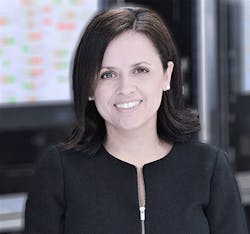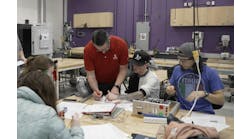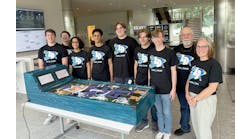Silvia Gonzalez is director of product management, software at Emerson.
According to U.S. census data, the percentage of women in engineering occupations has increased from a mere 3% to 15% over the past 50 years. While the needle is pointed in the right direction, there’s still a lot of room to grow that number. What seem to be the biggest hurdles to women interested in engineering and automation fields? And what difficulties are employers encountering as they work to increase that number?
Silvia Gonzalez, director of product management, software, Emerson: After the pandemic, one of the biggest hurdles for employees in general, not just women, is to have flexibility at work. It has become more relevant for companies to enable employees to have different work arrangements that promote better work-life balance, and I believe this improved flexibility could entice more women to join the workforce. Also, women and other diverse sectors are looking for organizations that attract talent based on merit and not diversity. Women want to be treated the same and want to be measured based on their results, the same as anyone else.
Also read: 5 ways to find success as a woman in STEM
Director of product management, software, Emerson
In her relatively famous study, published in the Harvard Business Review, MIT’s Susan Silbey and her colleagues found that women in engineering experienced a significant amount of gender bias not only at the college level, but even more so in internships and co-ops and then when entering the workforce. She estimates that 40% of women who earn an engineering degree either quit or never enter the profession. What can be done to nurture and develop these women, especially early in their careers?
Silvia Gonzalez, director of product management, software, Emerson: I believe coaching and mentoring should be a big part of the effort for companies to support women in engineering. Communicating with new generations how relevant it is to continue learning and growing professionally, sharing experiences others had in the industry and supporting them to challenge companies where gender bias still exists. Some countries are better than others, but global companies can make a difference by training their employees and providing an inclusive environment where everyone is heard despite their gender, ethnicity or other differences.
According to the latest research from the Society for Women Engineers, females earn 10% less than their male counterparts. How does this impact a woman’s interest in entering an automation-related field, and what can be done to counteract this?
Silvia Gonzalez, director of product management, software, Emerson: Part of the decision-making process to join a company or industry is the salary, but there are other factors that should be taken into consideration. For instance, is it the right role? Does the job represent a professional challenge? Will you learn something new? Will you gain exposure? Are there growth opportunities? Is the company aligned with your values?
Even though salary is very important, it shouldn’t be the only factor considered or impacting the decision to enter the automation field. Even though the evaluation of a job opportunity includes many different factors, companies shouldn’t make different offers based on gender or other diversity, but based on merit. Some even recommend doing non-bias interviews to accurately evaluate candidates.
How can mentoring programs help women to stay the course and feel fulfilled in their automation or engineering pursuits?
Silvia Gonzalez, director of product management, software, Emerson: It is very important to provide formal and informal mentoring in a company to enable communities to support each other. Being able to discuss your personal/professional situation with others helps everyone understand we all face similar challenges. Mentoring is a highly recommended practice, and it doesn’t require formal processes to make it happen; you can have several mentors in different areas to help you where needed, on wide-ranging topics such as financial advice, coping with stress at work or help navigating a meeting. Acting as a mentor to some and being a mentee with others helps to ensure professional growth. Mentoring programs can help women get access to other women that can share experiences or guide them in decision making or role models. Men can also play an important mentorship role, and I had great mentors, both men and women, throughout my career, at different levels of the organization to help me navigate the industry.
What sorts of initiatives is your company involved with to encourage female participation in the automation field?
Silvia Gonzalez, director of product management, software, Emerson: Emerson has various programs to support inclusion and diversity, and one example is the Women in STEM, with a mission of fostering a diverse, equitable and inclusive environment. The heart of the work Women in STEM performs is around our chapters. Each chapter is where connections are made, professional development takes place, and we attract women to STEM careers through our community outreach including “We love STEM” events. These chapters have created a monumental impact to increase employee engagement reaching more than 5,000 Women in STEM members globally.







